
views
X
Research source
What can you do if you need to memorize a credit card number, or an even longer sequence of digits? By converting numbers into less abstract ideas, it is possible to remember very long numbers.
Using the Number/Shape Method
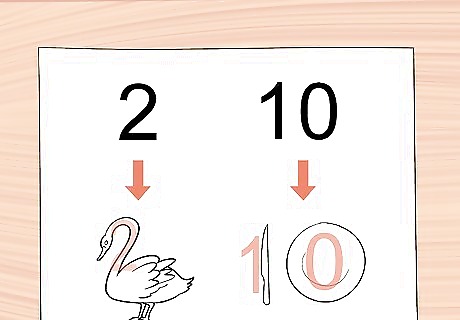
Look for shapes within your number. Part of what makes numbers difficult to remember is that they are symbols that don't actually correspond in any way with the quantity of things they represent. You can get around this by trying to create mental images based on the shapes of the digits. For example, you might decide that the shape of the number 2 reminds you of a duck. You can then remember 2 as "duck." Number 10 might look like a knife next to a plate, so you could remember 10 as "knife and plate." It doesn't actually matter which images you choose to associate with which numbers, as long as they are memorable for you.
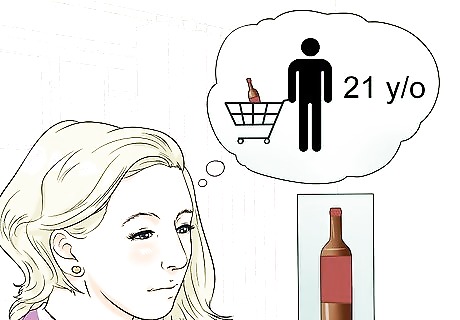
Choose related images for difficult digits. Some numbers might not translate well into pictures for you. In such cases, associate an image with the number that relates to the number in some other way. For example, maybe you've decided that the number 21 just doesn't look like anything to you. The number 21, however, is notable as the age at which one can legally purchase alcohol. So you might imagine a bottle of wine or beer.
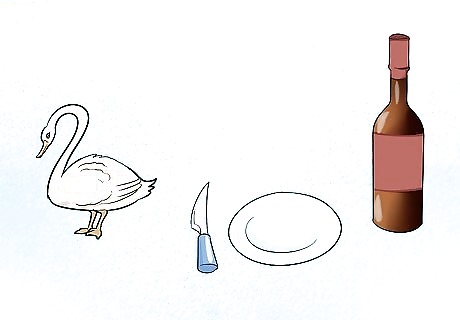
Create a mental picture using all the images. Next, put all these images together to form a single mental picture. Set the images up in your mind so you can read them from left to right like you would an ordinary number. Using the examples above, if you wanted to memorize the number 21021, you might imagine a duck (2), pecking food off of plate with a knife laying to the left of it (10) and a bottle of beer on the right (21). Alternatively, you could imagine a plate of food with bottles of beer on each side: 21, 0, 21.

Decode the images when you need the number. When you need to use the number, simply call the mental picture to mind, and decode your image back into numbers.
Using the Phonetic System
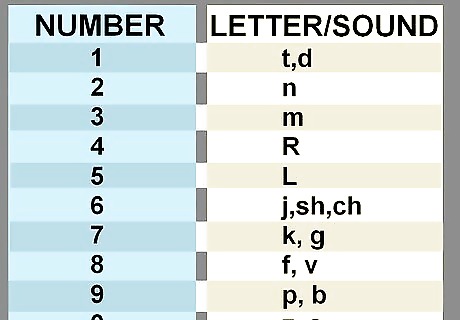
Associate digits with sounds. The number/shape method works fine with shorter numbers, but as numbers start to get longer, it can be difficult to remember what each image was supposed to represent. The phonetic method works by encoding numbers as sounds. To start, assign a consonant sound or sounds to every digit, zero through nine. For example, you might assign the "R" sound to the number 4, since a capital "R" looks a bit like a backwards 4. You can assign whichever sounds you want to each digit, as long as you use the same sounds for the same digit every time. If you don't want to take the time to create your own system, you can use one that's already been created. The Major Memory System has pre-assigned sounds for each digit. Do not assign vowel sounds (a, e, i, o, or u) to any digit. Vowels have no "value" in a system like this, as that makes it easier to create words later. "W," "h," and "y" are also usually left without a numerical value.
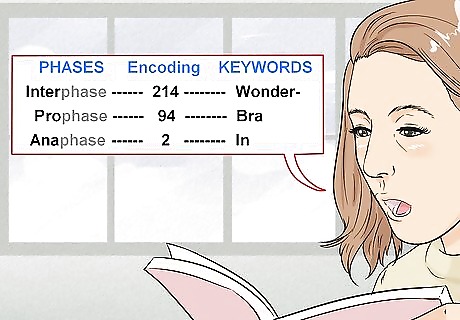
Memorize your mnemonic system. This collection of sound associations is called a mnemonic system. Take some time and memorize which sounds correspond to which digits. This will make it easy to encode and decode numbers using this system later. This may seem daunting, but most people mind they can memorize a mnemonic system in as little as 20 minutes.
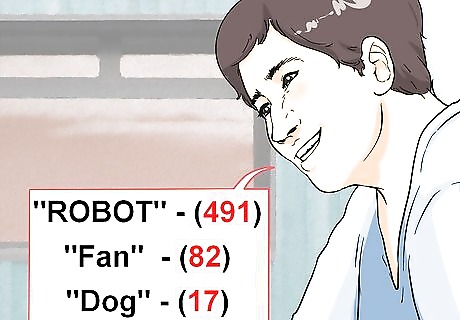
Create words using the sounds. Next, create words using the sounds assigned to each digit in the number you want to remember. Since vowels have no value, you can add whichever vowels you need to form words. For example, imagine you need to remember the number 4918217. In the Major Memory System, this would translate to r-b-d/t/th-v/f-n-d/t/th-k/c/g. There are lots of word sequences you could potentially make with these sounds, such as robot (491) fan (82) dog (17). Choose words that will be easy to visualize. Concrete nouns usually work best. Note that numbers are converted into sounds and not actual letters. The number 95, for example, translates into "bl" in the Major Memory System. You could make the words "ball" or "bull" with those letters, since the double-L sounds the same as a single L.

Associate images with the words. Words are typically easier to remember than numbers. You'd probably find "robot fan dog" easier to recall than 4918217. But many people find it easier still to create a mental picture using these images. In the case of our example, you could imagine a robot fanning a panting dog on a hot day.
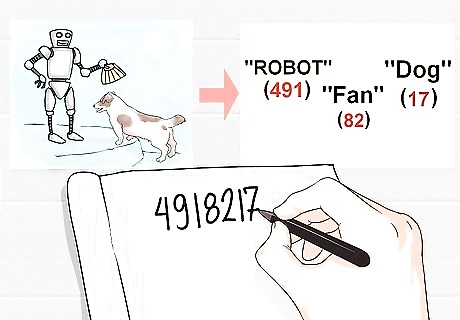
Decode the words when you need the number. When you need to use the number, simply decode the words you have created from your numbers. Early on in using this system, it might be helpful to carry a chart with the numbers and sounds, just until you have it completely memorized.
Creating a Mind Palace or Story

Visualize your images in a place. Whether you use the shape method or the phonetic one, many people find it easiest to remember images if they are placed in a story, or spatially in an imagined "mind palace." To begin, imagine all your images in one place. This can be especially helpful with very long numbers. Any place will do--a house, a park, a sailing ship, whatever you like.
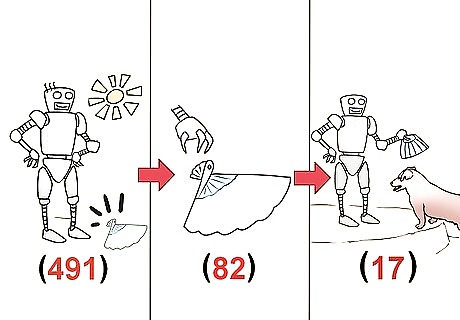
Create a story or path with the images. Create some memorable sequence using these images. This can be done either by making up a story in which each of the images appears, or by imagining walking through the space you have imagined your images in, seeing each image one at a time. For example, you could come up with a short story like this: "It was a sweltering hot day. A robot (32) picked up a fan(82). He began to wave it at a panting dog(17) to cool him off." Note that every concrete noun (man, fan, and dog) corresponds to digits in our number. Another approach is imagine yourself walking through a space (a "mind palace" or "memory palace") and seeing each image in sequence. Using this technique, you might imagine a robot opening the door into a hallway where you a greeted by your favorite type of dog. You turn the corner in the hallway and feel the breeze from a large fan spinning on the ceiling above you.
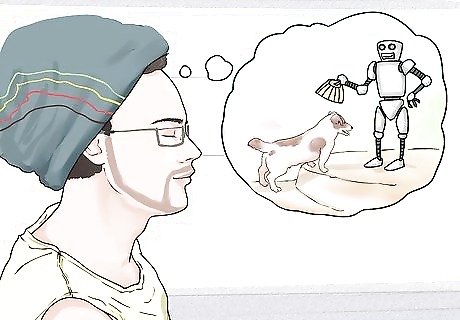
Make it vivid and memorable. Make your story or memory palace journey as memorable as possible. Picture details, and make them vivid so they'll stick in your mind. Some people find it helpful to make their story dramatic or even gross. Sticking with our simple example, imagine what the robot looks like. Is it short? Tall? is it metallic or has it been painted some color? Is it boxy and awkward like in an old sci-fi film, or sleek and futuristic? What type of dog is it? What color? What does the fan look like? Imagine the cool breeze of the fan on a hot afternoon.
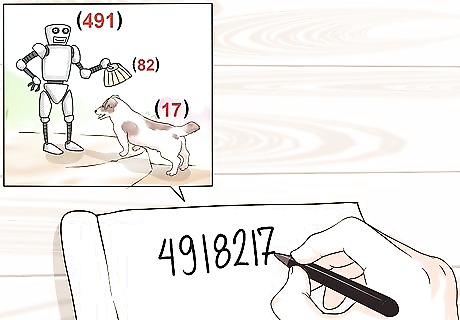
Decode your story when you need the numbers. Finally, you'll decode your story or journey by breaking it down into words and then breaking those words down into numbers.












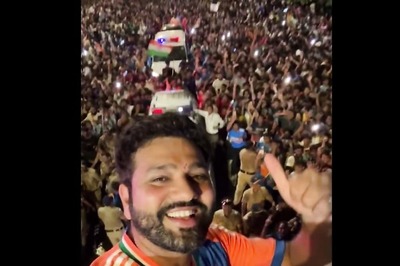
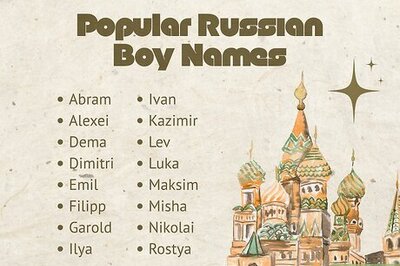

Comments
0 comment